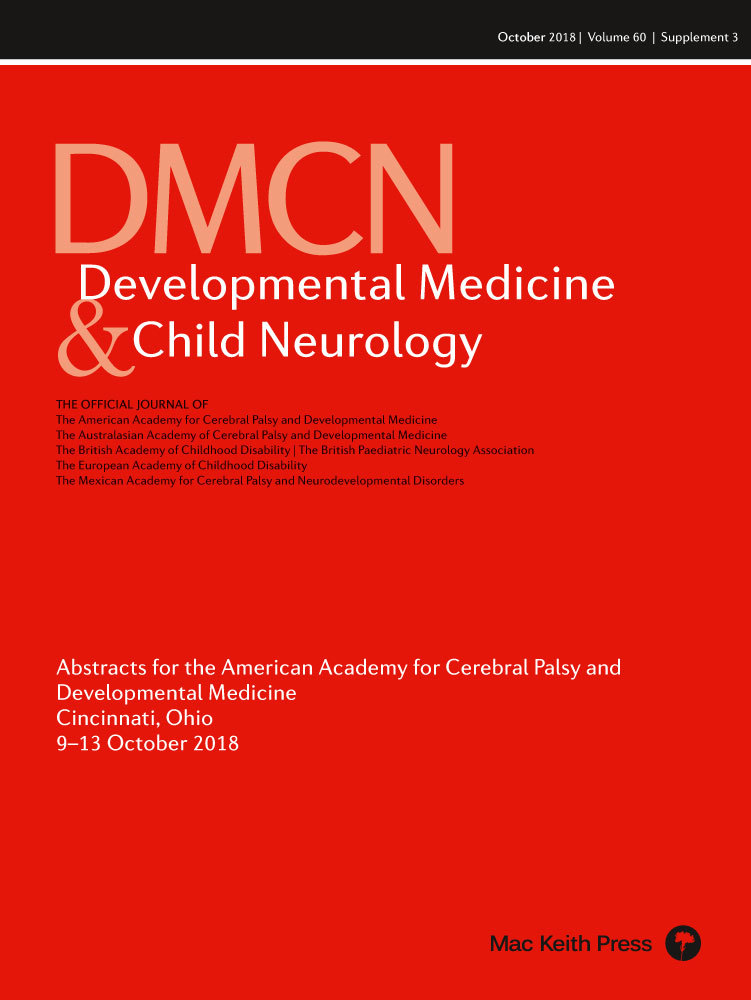The onset and characteristics of walking in children born preterm compared with full term children
I5
R Albesher1,2, A Spittle3, J McGinley3, F Dobson3
1The University of Melbourne, Murdoch Children's Research Institute, Melbourne, Australia; 2Princess Nourah bint Abdulrahman University, Riyadh, Saudi Arabia; 3The University of Melbourne, Melbourne, Australia;
Background and Objective(s): Children born preterm (<37 gestation weeks) are at significant risk of neurodevelopmental impairments. However, less is known about the longer term effects of preterm birth on activity and participation limitations including walking. Although walking onset of children born preterm is anticipated to be late compared to children born full-term, this is yet to be systematically quantified. This review aims to 1) Identify the age of walking onset of children born preterm (<37 gestation weeks) compared with their full-term peers; and 2) Investigate whether gait characteristics of children born preterm differ from those born full-term.
Study Design: Systematic review.
Study Participants & Setting: Children born preterm (<37 gestation weeks) without congenital abnormalities or a diagnosis of cerebral palsy.
Materials/Methods: Electronic searches of Medline, Embase, Scopus, CINAHL and SPORTdiscus database were conducted. For Aim 1 (walking onset), prospective longitudinal studies that reported corrected age of walking onset were included. For Aim 2 (gait characteristics), studies that compared spatiotemporal or/and kinematic and/or kinetic gait characteristics of independent walking in children born preterm with their full term peers were eligible. The quality of the studies was independently rated by two reviewers using the Newcastle-Ottawa Scale.
Results: For Aim 1, 14 studies were included, 1436 infants born preterm (mean gestational age (GA) 30.54 weeks, SD 1.59) and 1317 full-term infants (mean GA 39.08 weeks, SD 0.36). Walking onset was significantly later for preterm infants (mean 13.67 months, SD 1.12) compared with the full-term infants (mean 12.24 months, SD 0.83; p <0.05). When comparing walking onset age of very preterm infants (born <32 weeks’ gestation) and very low birth weight (born weighting <1500 g) infants (mean 14.4 months, SD 1.84; mean 14.22, SD 0.84) to full-term infants (mean 12.24 months, SD 0.83) there was a significant delay in onset of two months. For Aim 2, six studies were included, 244 children born preterm (mean GA 30.62 weeks, SD 2.45) and 179 full-term peers (mean GA 39.08 weeks, SD 1.23). Five studies investigated spatio-temporal gait characteristics (e.g. speed, cadence, step length, step width and variability) and reported no significant differences in most characteristics. Exceptions were step width, which was found to be significantly (p=0.009) wider in preterm (mean 10.4 cm SD 2.2) compared to full-term children (mean 9.4 cm, SD 1.5), and stride length significantly (p=0.04) shorter in preterm (mean 0.54 m, SD 0.06) compared to full-term children (mean 0.57 m, SD 0.07) in a separate study.
Conclusions/Significance: This review confirms that children born preterm walk later than those born full-term. However, there is limited evidence if and how preterm children's gait differs, and whether any differences persist. Based on this knowledge gap, further investigation of the prematurity effects on the gait characteristics in a cohort of preterm children is warranted.




